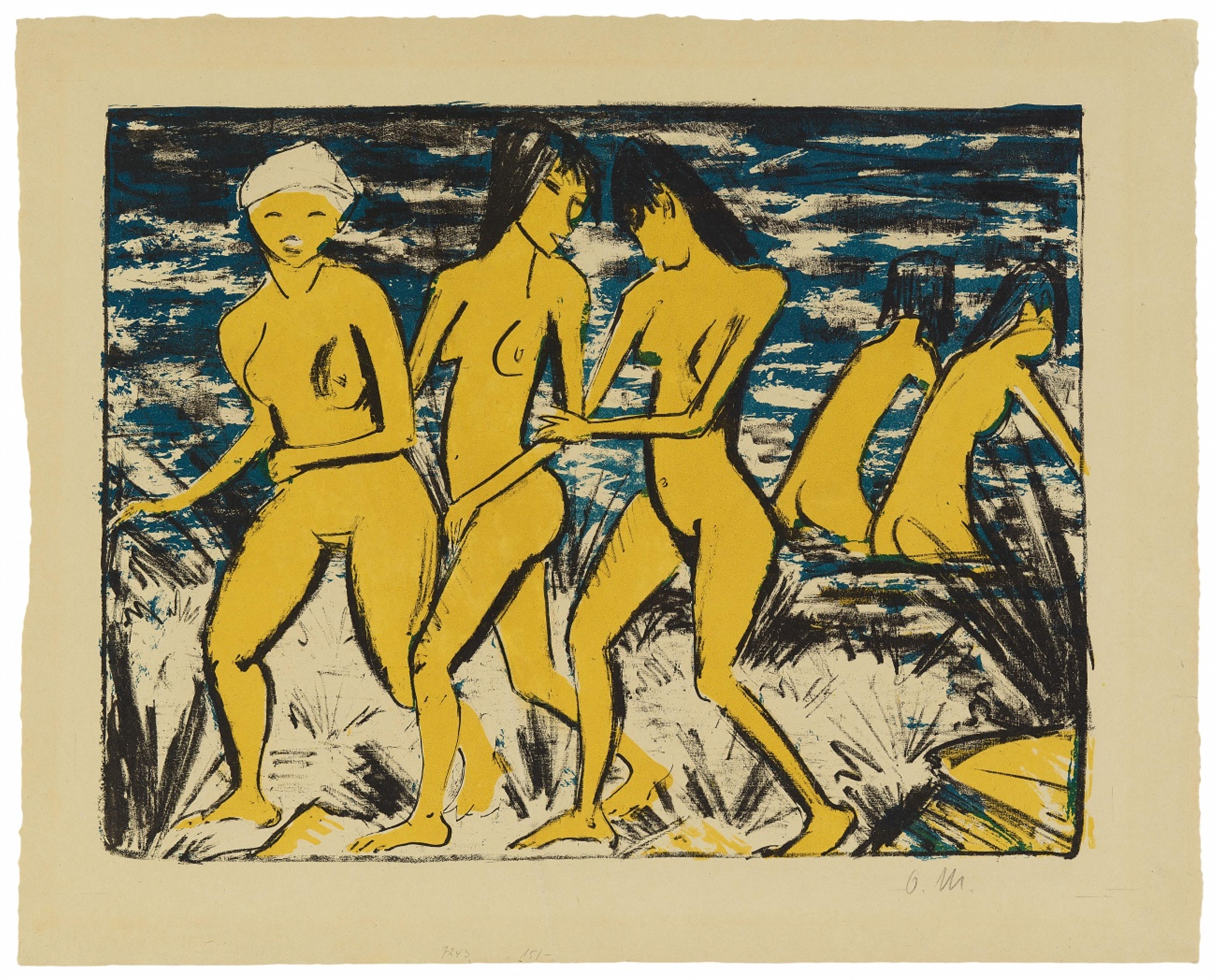Otto Mueller
Fünf gelbe Akte am Wasser
1921
Colour lithograph on laid paper 33.5 x 43.8 cm (42.1 x 51.8/52.6 cm) Framed under glass. Monogrammed. One of approx. 100 uncounted proofs on this paper for the publisher Hyperion-Verlag (Kurt Wolff). - Strong print with vibrant colours. Hardly noticeable light-stain.
From 1908 onwards, Otto Mueller increasingly favoured lithography among the classic modern printing techniques. Woodcuts played an extremely limited role in his work and etching none at all. It is not even known whether the artist ever completed a single etching. For him, creating a lithograph was like drawing. He created these prints parallel to his painted body of work and they often reflect the subjects of his paintings: bathing figures, studies of nudes in landscapes, situated between trees or next to ponds. The order in which they were made is not always entirely clear: before, after or during work on the paintings? It is certain that Otto Mueller's lithographs represent an autonomous group of works, that is, they are not compositional sketches or preparatory drawings. This technique is a planographic process founded on rolling grease-based ink on to a dampened stone, whose moisture then repels the ink. At the same time, the printing ink adheres to the drawing previously applied to the stone and is then transferred to paper by means of intense pressure applied with the help of a lithographic printing press. In the present composition the artist has additionally decided to employ the two colours yellow and blue, and these are then printed one after the other by means of the same process. (There are exceptions, such as the lithographs Mueller coloured by hand using watercolours or coloured chalk.) However, in order to provide the lithograph with the character of a drawing, the artist preferred to work with chalk as a way to also achieve the finest nuances of line during the usually rapid and expressive realisation of his ideas. The irregular edges convincingly demonstrate the use of the stone's entire surface, and this is also typical of Mueller's work, who often even printed his early lithographs himself. From 1919, as a professor at the art academy in Breslau, he had access to a lithographic printing press, allowing him to leave the strenuous printing process to the machine.
Catalogue Raisonné
Karsch 156

